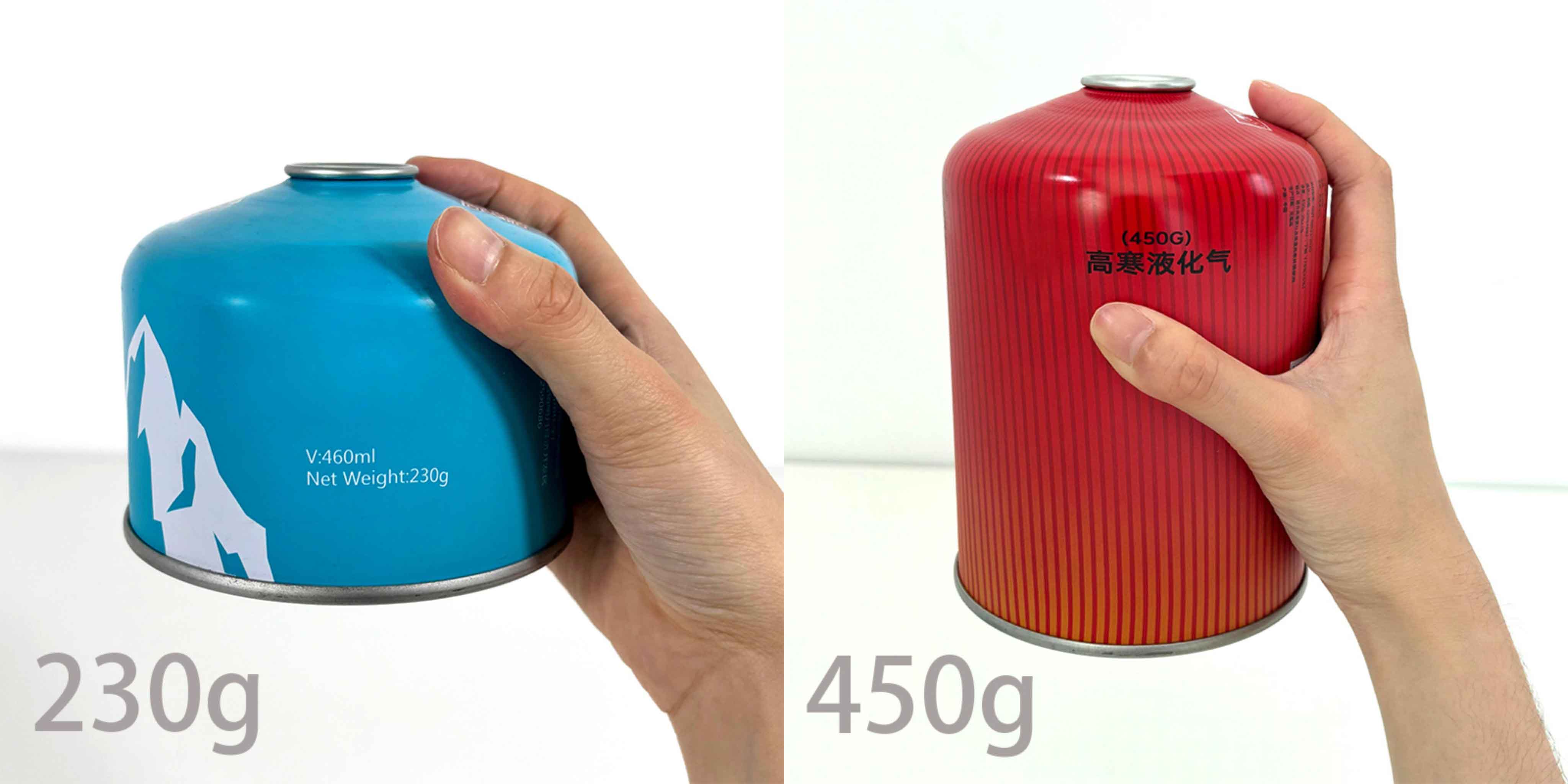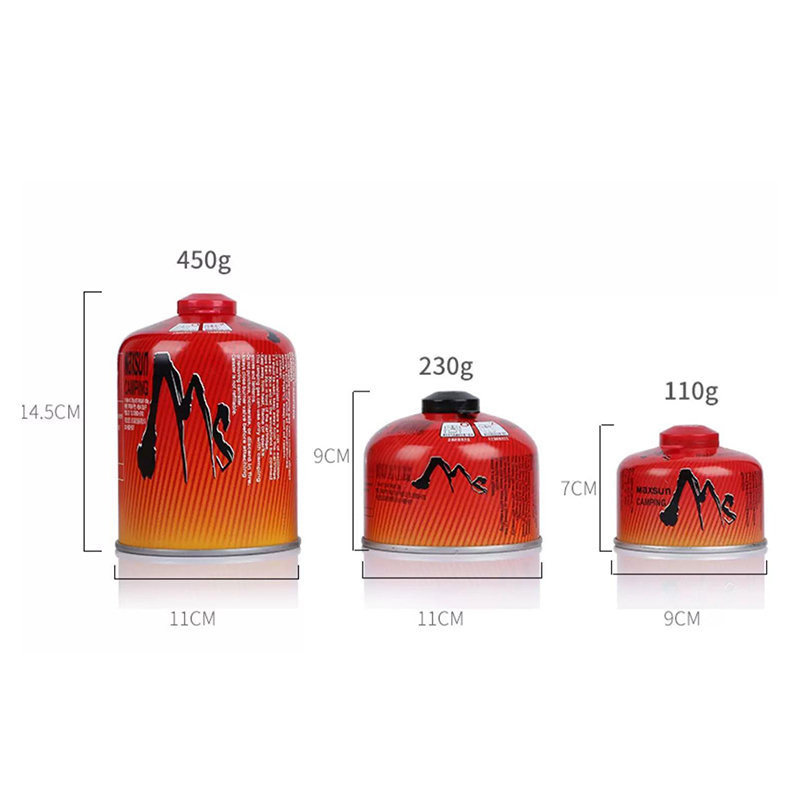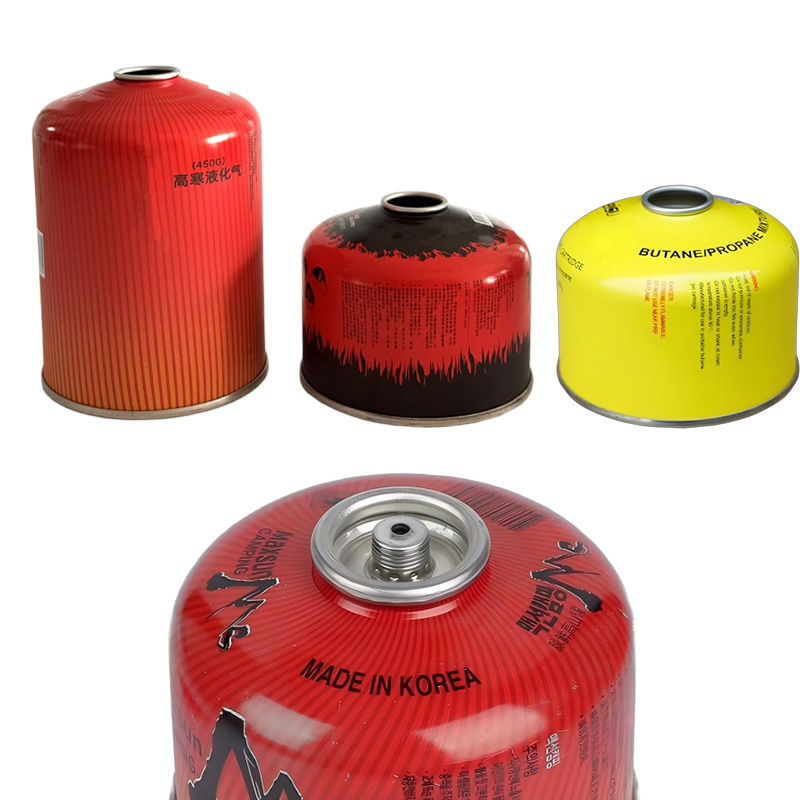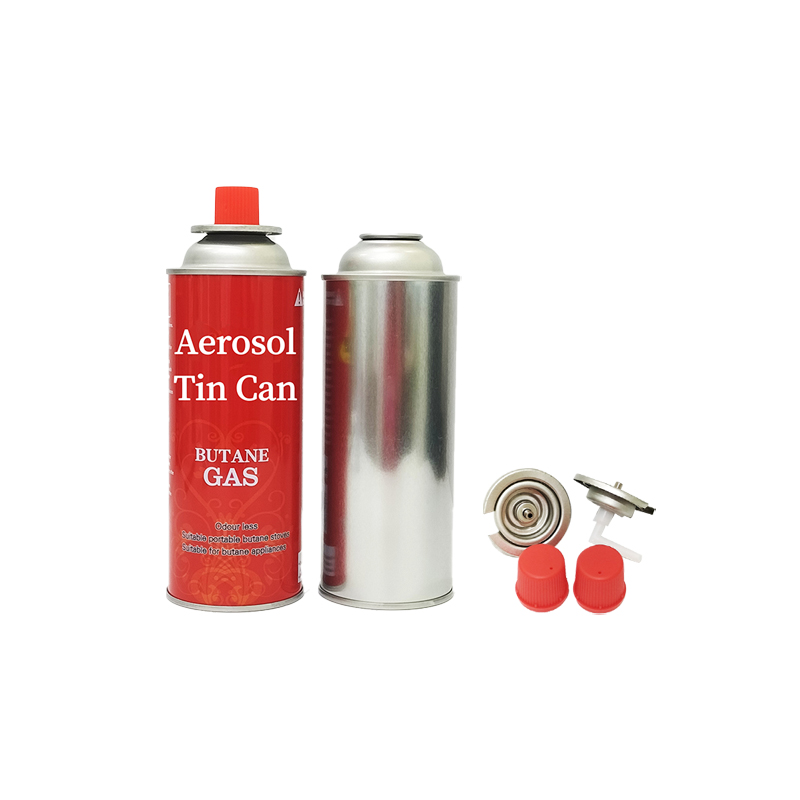Origins and Core Requirements of High Altitude Butane Gas Canister
Driven by User Pain Points
• Mountaineering Accident Case: 2023 frostbite incident in the Alps caused by gas canister leakage
• Standard canisters exhibit 37% flame output reduction above 2,500m altitude (data sourced from Journal of Outdoor Equipment)
Industrial Response
• 1992: Coleman pioneers "Altitude-Tuned Canister" concept
• Modern alpine canister benchmarks:
Pressure resistance ≥3.8MPa
Operational temperature -30°C to 50°C
EN417 certification compliance
High Altitude Butane Gas Canister
| Net Weight | Size |
| 110g | 90x70mm |
| 230g | 110x90mm |
| 450g | 110x145mm |
 |
|

Feature:
√ Tank bottom high pressure buffer technology
√ Resistane to high cold & high altitude
√ International explosion-proof air outlet
√ Burn more fully & for a long time
√ High purity gas formula
Structural Differences: Two-Piece Butane Gas Canister vs. Three-Piece Butane Gas Canister
| Product Name | Two-Piece High Altitude Butane Gas Canister | Three-Piece Butane Gas Canister |
| Reference Picture |  |
 |
| Can Structure | Seamless can body + base (no side welding) | Welded can body, top, and base |
| Production Process | Deep-drawn forming, better sealing | Multiple weld seams, higher leakage risk |
| Pressure Resistance | typically ≥3.8MPa | typically ≤2.5MPa |
| Cold Resistance | Works reliably at -30°C | May underperform below 0°C |
| High-Altitude Use | Optimized for 3000m+ elevation | Best for low-altitude conditions |
| Cost | Higher (premium materials & process) | Lower (mass-market production) |
Advantages of Two-Piece High Altitude Butane Gas Canister
No welds, safer: Fewer leakage points, ideal for high-pressure environments.
Better cold resistance: Seamless design avoids brittleness in low temperatures.
Why Are Two-Piece Butane Gas Canister Valves More Reliable?
Leak-proof design: Dual sealing ensures safety even if O-rings degrade.
Cold-optimized: Special valve materials prevent freezing or jamming.
Stable gas output: Maintains consistent flame in low-oxygen environments.
Why Are Two-Piece Butane Gas Canister Better for High Altitudes?
(1) Optimized Fuel Blend
Alpine canisters use isobutane + propane mix (e.g., 70/30 ratio), while standard cartridges often use pure butane.
Higher propane = better cold performance (propane boils at -42°C vs. butane at -0.5°C).
Stable vaporization at low pressure, preventing weak flame output.
(2) Higher Pressure Resistance
Alpine canisters typically have a 3.8MPa burst pressure, vs. ~2.5MPa for standard cartridges.
Withstands extreme temperature swings in alpine environments.
(3) Lightweight & Portable
Made from high-strength nickel-plated steel, alpine canisters are lighter yet stronger than standard cartridges.
Industry Standards & Buying Guide
✅ How to Identify a High-Quality Alpine Canister?
- Check certifications: EN417 (Europe), DOT (USA).
- Inspect the valve: Metal-threaded valves (plastic valves indicate lower quality).
- Weigh it: A 450g alpine canister should weigh 160-170g when empty (lighter may mean inferior materials).
🚫 Common Misconceptions
- Standard cartridges work fine for mountaineering” → May fail in cold or high-altitude conditions.
- Alpine canisters can be refilled” → Never! Non-refillable by design—extremely dangerous to tamper with.
Which One Should You Choose?
| Scenario | Recommended Choice | Reason |
| Low-altitude camping | Standard gas cartridge | Cost-effective, sufficient performance |
| High-altitude climbing | High Altitude Butane Gas Canister | Cold-resistant, high-pressure stable flame |
| Extreme conditions | High Altitude Butane Gas Canister (high propane %) | Ensures operation below -30°C |